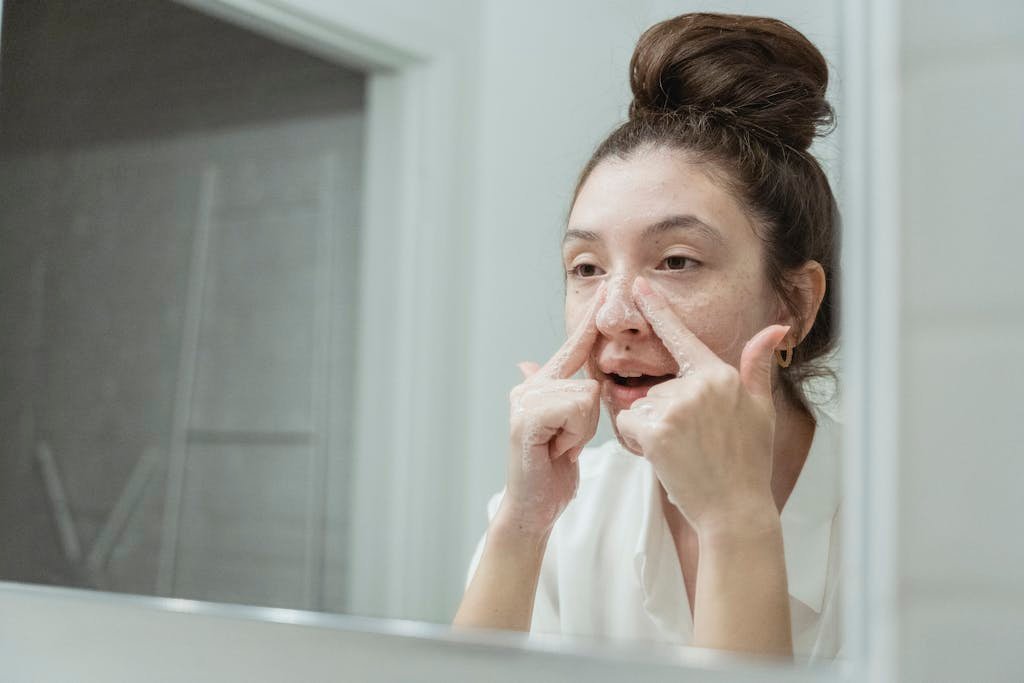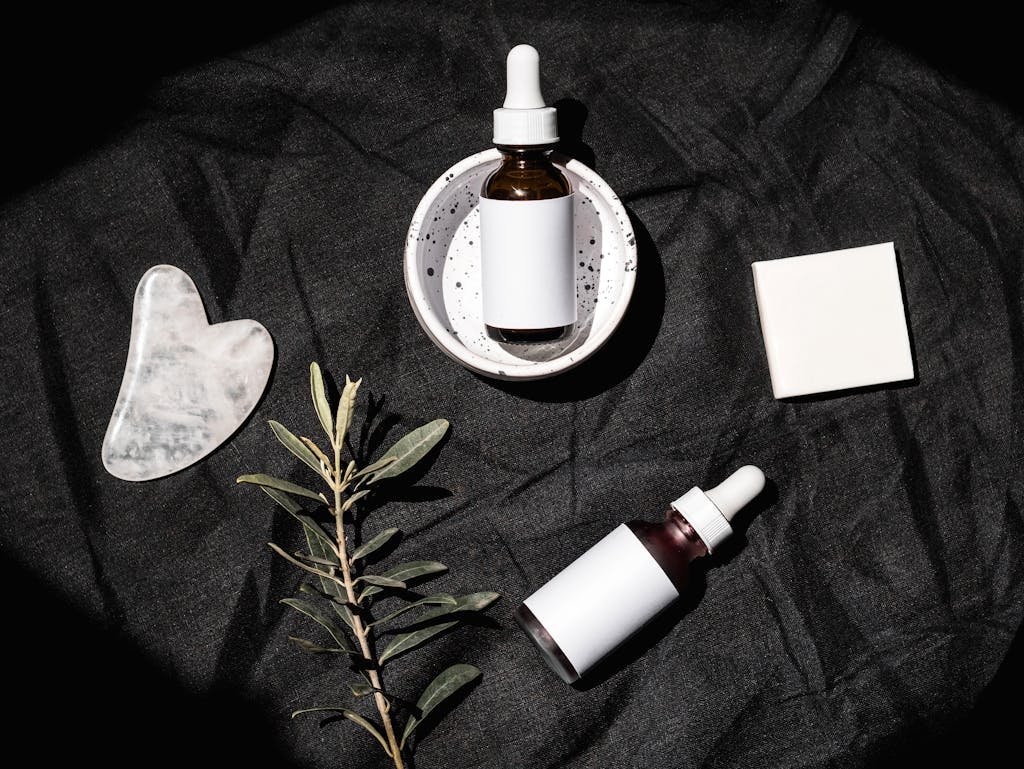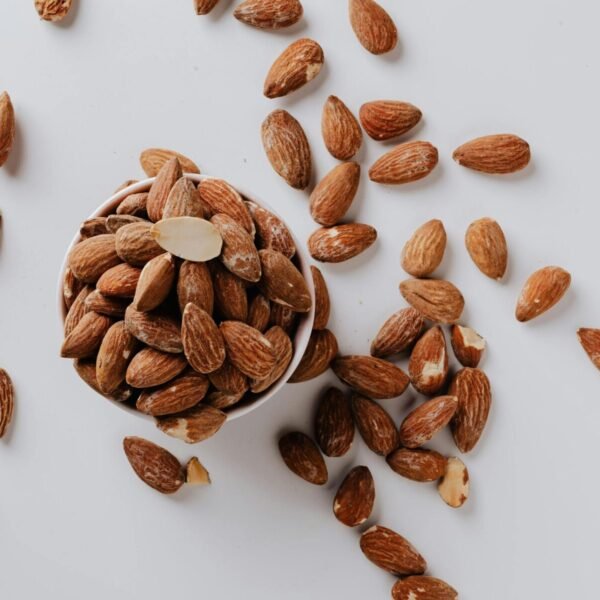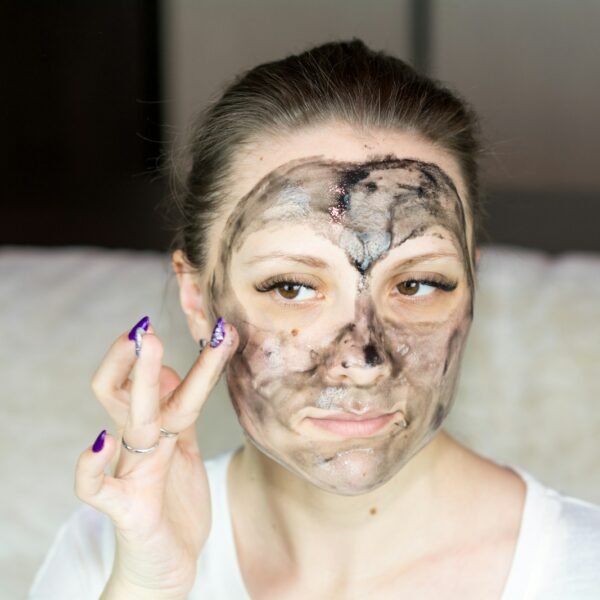If you’ve been navigating the world of skincare acids, you’ve probably encountered these two powerful ingredients. Understanding the differences and benefits of AHA vs BHA for acne is crucial in crafting an effective skincare routine.
This post will break down what AHAs and BHAs are, explore AHA vs BHA advantages for acne-prone skin, and provide guidance on how to choose the right one. By the end, it will be clearer how to incorporate these acids into a skincare routine for clearer, healthier skin. Sounds good? Let’s dive in!
What are AHAs and BHAs?
These two types of acids are often hailed as miracle workers in the skincare world, but what exactly are they?
AHAs (Alpha-Hydroxy Acids)
Think of AHAs as your skin’s best friend for surface-level concerns. AHAs are water-soluble acids derived from fruits and milk.
The most common types you’ll come across are glycolic acid, lactic acid, citric acid, and mandelic acid.
These acids work by gently exfoliating the surface of your skin, removing dead skin cells to reveal the fresh, new skin underneath.
This process not only helps to unclog pores but also improves skin texture and tone.
BHAs (Beta-Hydroxy Acids)
BHAs, on the other hand, are like your personal deep-cleaning crew.
Salicylic acid is the most well-known BHA, and it’s oil-soluble, which means it can penetrate deeper into the pores.
This makes BHAs particularly effective for treating acne, as they can dissolve the oil and debris that clog pores and lead to breakouts.
BHAs also have anti-inflammatory and antibacterial properties, which help to calm irritated skin and reduce redness.
Benefits of AHA vs BHA for Acne
Each acid has its unique strengths, and understanding these can help you make an informed decision about which one might be the best fit for adding to your skincare routine.
Benefits of AHA for Acne
AHAs work wonders on the skin’s surface, making them ideal for those dealing with mild to moderate acne. Here’s how AHAs can help:
- Exfoliation: AHA gently exfoliate the top layer of the skin, removing dead skin cells that can clog pores and lead to breakouts. This process also helps to smooth out rough skin and improve overall texture.
- Brightening: By promoting cell turnover, AHA can fade post-acne marks and hyperpigmentation, giving you a more even and radiant complexion.
- Hydration: Some AHAs, like lactic acid, have hydrating properties that help keep the skin moisturized while they exfoliate, which is a bonus if your skin tends to be on the drier side.
Benefits of BHA for Acne
When it comes to tackling more stubborn acne, BHA is your go-to. Here’s why:
- Deep Cleansing: BHA penetrates deeper into the pores, making them highly effective at clearing out excess oil, debris, and dead skin cells that can cause acne. This deep-cleansing action helps prevent future breakouts.
- Anti-Inflammatory: BHAs have anti-inflammatory properties, which can help reduce the redness and swelling associated with acne. This makes them great for calming active breakouts.
- Oil Control: Since BHAs are oil-soluble, they can help control excess sebum production, which is often a major factor in acne development.

AHA vs BHA for Acne : Key Differences
Let’s break down their key differences to get a better idea of what they do
Chemical Structure and Solubility
The primary difference between AHAs and BHAs lies in their chemical structure and solubility:
- AHAs (Alpha Hydroxy Acids): AHAs are water-soluble acids. They work on the skin’s surface to exfoliate and improve texture and tone.
- BHAs (Beta Hydroxy Acids): BHAs are oil-soluble, which allows them to penetrate deeper into the skin’s pores. This makes them effective for treating acne from within.
Mechanism of Action
AHAs and BHAs work differently, which affects how they treat acne:
- AHAs (Alpha Hydroxy Acids): By exfoliating the top layer of the skin, AHAs remove dead skin cells that can clog pores and cause breakouts. They also stimulate collagen production, which can help reduce the appearance of acne scars and fine lines.
- BHAs (Beta Hydroxy Acids): BHAs go deeper into the pores to dissolve oil and debris, making them highly effective for reducing blackheads, whiteheads, and deeper acne. Their anti-inflammatory and antibacterial properties help to soothe inflamed skin and prevent new breakouts.
Skin Type Suitability
Different skin types respond differently to AHAs and BHAs:
- AHAs (Alpha Hydroxy Acids): Ideal for normal to dry skin types, AHAs also work well for those dealing with sun-damaged or aging skin. Their hydrating properties make them less likely to cause irritation compared to BHAs.
- BHAs (Beta Hydroxy Acids): Better suited for oily and acne-prone skin, BHAs can penetrate oily surfaces to clear out pores. They are also suitable for combination skin types and those struggling with persistent acne.
When to Use AHA vs BHA for Acne
The use of AHAs vs BHAs depends on your specific skin concerns:
- Use AHAs: If you need to exfoliate dead skin cells, brighten dull skin, reduce the appearance of fine lines and wrinkles, and improve skin texture.
- Use BHAs: If you need to clear out clogged pores, reduce oiliness, calm inflamed skin, and treat blackheads and whiteheads.
Can You Use AHAs and BHAs Together?
When it comes to skincare, combining AHAs and BHAs can feel like a complex chemistry experiment. But the simple answer is yes!
Pros and Cons of Combining AHAs and BHAs
Pros:
- Enhanced Exfoliation: Using both AHAs and BHAs can provide comprehensive exfoliation, tackling both the surface layer of the skin and deeper within the pores. This dual action can lead to smoother, clearer skin.
- Improved Skin Texture: AHAs help with surface-level skin texture, reducing fine lines and promoting an even skin tone, while BHAs penetrate and unclog pores, reducing blackheads and acne.
- Versatile Benefits: By combining these acids, you can address a wider range of skin concerns simultaneously, from acne and hyperpigmentation to signs of aging and uneven texture .
Cons:
- Increased Irritation: Using both acids together can increase the risk of skin irritation, redness, and dryness, especially for those with sensitive skin.
- Over-Exfoliation: There’s a fine line between effective exfoliation and over-exfoliation. Overdoing it can lead to a compromised skin barrier, making your skin more susceptible to damage and sensitivity.
Conditions in Which AHAs and BHAs Can Be Combined.
Using AHAs and BHAs together can offer a powerful skincare solution, but it’s essential to do so under the right conditions to maximize benefits and minimize potential risks. Here are some conditions to consider:
Skin Type
- Normal to Oily Skin: If you have normal to oily skin, using AHAs and BHAs together can be beneficial as your skin is generally more resilient.
BHAs help to manage excess oil and clear out pores, while AHAs exfoliate the surface, enhancing overall texture and tone.
- Combination Skin: For those with combination skin, a targeted application can be highly effective.
Use BHAs on oilier areas like the T-zone (forehead, nose, and chin) to reduce blackheads and breakouts, and apply AHAs on drier areas to promote even skin texture and hydration.
Type of Acne
- Mild to Moderate Acne: AHAs and BHAs can work together to combat different aspects of acne.
BHAs (like salicylic acid) penetrate and clear clogged pores, reducing blackheads and whiteheads, while AHAs (such as glycolic acid) remove dead skin cells and help prevent new breakouts by keeping the skin’s surface clear.
- Surface-Level Acne and Hyperpigmentation: AHAs are particularly effective for treating post-acne marks and hyperpigmentation. Combining them with BHAs, which target deeper within the pores, can provide a comprehensive approach to treating acne and its aftermath.
Skin Sensitivity
- Low Sensitivity: If your skin is not particularly sensitive and you have a history of using exfoliants without adverse reactions, you can try incorporating both AHAs and BHAs into your routine. Start slowly, perhaps using each product on alternate days or in different parts of your routine, to gauge your skin’s tolerance.
- Acclimated Skin: If your skin is already accustomed to chemical exfoliants, you may be able to use AHAs and BHAs together more frequently. However, always monitor your skin for signs of irritation and adjust your usage accordingly.
Personal Skincare Goals
- Anti-aging: Combining AHAs and BHAs can provide enhanced anti-aging benefits.
AHAs promote cell turnover and improve skin texture, reducing the appearance of fine lines and wrinkles, while BHAs keep pores clear and prevent breakouts that can contribute to uneven skin texture.
- Hydration and Radiance: AHAs help to improve hydration by removing dead skin cells that can block moisturizers from penetrating deeply. Paired with BHAs, which keep pores clear, your skin can look more radiant and feel more hydrated.

How to Choose Between AHA vs BHA for Acne
Deciding whether to use AHAs or BHAs for acne can feel like choosing between your favorite desserts—both are tempting, but one might suit you better depending on your taste and needs.
Let’s break down the factors to consider when making your decision.
Skin Type: Your skin type plays a significant role in determining whether AHAs or BHAs will work best for you.
- Dry or Sensitive Skin: If your skin tends to be on the dry or sensitive side, AHAs might be your best bet.
Their water-soluble nature makes them gentler on the skin’s surface, helping to exfoliate without stripping away essential moisture.
Plus, AHAs often come with hydrating benefits that can soothe dry patches and improve skin texture.
- Oily or Combination Skin: For those battling oily or combination skin, BHAs are a strong contender.
Their oil-soluble properties allow them to penetrate deeply into pores, effectively clearing out excess oil and debris.
This deep cleansing helps reduce the frequency and severity of breakouts, making your skin feel cleaner and more balanced.
Type of Acne: Understanding the type of acne you’re dealing with is crucial in choosing between AHAs and BHAs.
- Surface-Level Acne: If your main concern is surface-level acne, such as whiteheads and mild breakouts, AHAs can work wonders.
They exfoliate the top layer of the skin, removing dead skin cells that can clog pores and lead to breakouts. This also helps to fade post-acne marks and improve overall skin radiance.
- Deeper, Cystic Acne: For those struggling with deeper, cystic acne, BHAs are the way to go. Their ability to penetrate the skin deeply allows them to address the root of the problem, unclogging pores and reducing inflammation.
BHAs are particularly effective in treating blackheads and deeper, more stubborn forms of acne.
Skin Sensitivity: Skin sensitivity is another important factor to consider:
- Less Sensitive Skin: If your skin isn’t particularly sensitive and you’re looking to tackle acne along with signs of aging or uneven texture, AHAs could be beneficial. They provide a powerful exfoliation that can smooth fine lines and improve skin tone without causing irritation in most cases.
- Highly Sensitive Skin: For highly sensitive skin, BHAs might be a safer choice in lower concentrations. Their anti-inflammatory properties help calm the skin, reducing redness and irritation often associated with acne. Salicylic acid, a common BHA, is known for its soothing effects on inflamed skin.
Personal Skincare Goals: Your overall skincare goals also influence your choice:
- Anti-Aging and Hydration: If you’re aiming for anti-aging benefits along with acne treatment, AHAs can provide dual benefits. Their exfoliating properties promote collagen production, reducing the appearance of fine lines and wrinkles while also offering hydration to keep your skin supple.
- Deep Cleansing and Oil Control: If your primary goal is to achieve a deep cleanse and control oil production, BHAs are your best friend. They work from within to clear out pores, reduce excess oil, and prevent new acne from forming, giving you a clearer, more balanced complexion.
Frequency of Use and Recommended Concentrations
AHAs:
– Beginners: Start with 5-8% concentration, used 1-2 times a week.
– Intermediate: Once your skin adjusts, move up to 8-10% concentration, used 2-3 times a week.
– Advanced: For those with resilient skin, 10-15% concentration can be used every other day or as tolerated.
BHAs:
– Beginners: Start with 0.5-1% concentration, used 1-2 times a week.
– Intermediate: Gradually increase to 2% concentration, used 2-3 times a week.
– Advanced: For those with more acne-prone skin, 2% concentration can be used daily if well-tolerated.
How to incorporate into Skincare Routine
While the combination of AHAs and BHAs can be powerful, it’s crucial to be mindful of potential risks. To safely and effectively use AHAs and BHAs together, consider the following guidelines:
- Start Slowly: Introduce one product at a time to see how your skin reacts. Begin with lower concentrations of AHAs and/or BHAs, especially if you’re new to these ingredients.
- Frequency: Incorporate these acids into your routine gradually. Start with using the product once or twice a week, then slowly increase the frequency as your skin builds tolerance.
- Alternate Days: Use AHAs and BHAs on alternate days or even different times of the day (e.g., BHAs in the morning and AHAs at night) to prevent over-exfoliation.
- Moisturize and Protect: Follow up with a good moisturizer to maintain your skin barrier and prevent dryness. Always use sunscreen during the day, as both AHAs and BHAs can make your skin more sensitive to the sun.
- Patch Test: Conduct a patch test before fully integrating both acids into your routine to ensure you don’t have an adverse reaction. Apply a small amount of the product to areas of your skin, like behind your ear or your wrist. Wait 24-48 hours to see if any redness, itching, or irritation occurs.
- Skin Sensitivity: Combining these acids can increase skin sensitivity. Always follow with a moisturizer to help restore and protect your skin barrier. Look for products with soothing ingredients like ceramides and hyaluronic acid to counteract any dryness or irritation.
- Sun Sensitivity: Both AHAs and BHAs can make your skin more sensitive to the sun. Always apply a broad-spectrum sunscreen with at least SPF 30 every morning to protect your skin from UV damage even on cloudy days or when staying indoors, as UV rays can penetrate windows. Reapply every 2 hours when outdoors.
- Using formulations with both ingredients: There are many products that are formulated with both AHA and BHA in one product. This is a great way to reap the benefits of both.
- Spot Treatment: Another effective method is to use AHAs on larger surface areas prone to dryness or uneven texture and BHAs on oily or acne-prone zones. This targeted approach ensures each part of your face gets the care it needs without overdoing it.

AHA vs BHA for Acne: Which is Better?
Choosing between AHAs and BHAs largely depends on your skin type and the specific acne issues you’re dealing with.
If you have dry or sensitive skin, AHAs might be more suitable due to their hydrating properties.
On the other hand, if you have oily or combination skin and are prone to blackheads and deep-seated pimples, BHAs might be the better choice due to their ability to penetrate and clear out pores.
Common Myths and Misconceptions
When it comes to AHAs and BHAs, there are plenty of myths and misconceptions floating around. Let’s set the record straight and dispel some of the most common misunderstandings about these powerful skincare ingredients.
Myth 1: AHAs and BHAs Cause Excessive Skin Peeling or Damage
One of the biggest fears people have is that using AHAs or BHAs will leave their skin peeling excessively or cause permanent damage.
While it’s true that these acids work by exfoliating the top layers of the skin, when used correctly, they do not lead to excessive peeling or harm.
Why It Happens:
- Incorrect Usage: Overuse or applying high concentrations too frequently can cause irritation. This is why starting with lower concentrations and gradually increasing usage is crucial.
- Sensitivity: Some individuals may have more sensitive skin that reacts strongly to exfoliants. It’s always a good idea to patch test and monitor your skin’s response.
Myth 2: AHAs and BHAs Are Not Safe for Daily Use
Another common myth is that AHAs and BHAs are too harsh for daily use. While this might be true for some, it’s not a universal rule.
Many people can use these acids daily with no issues, especially as their skin builds tolerance over time, but it is not always necessary. Three times a week is more than enough.
Considerations:
- Skin Type: Individuals with more resilient skin may find they can use these acids daily. However, those with sensitive skin might need to stick to less frequent applications.
- Concentration: Lower concentrations of AHAs (5-8%) and BHAs (0.5-2%) are typically suitable for regular use. Higher concentrations should be used less frequently.
Myth 3: AHAs and BHAs Are Only for Acne-Prone Skin
While AHAs and BHAs are fantastic for treating acne, their benefits extend far beyond just acne-prone skin.
These acids can help with a variety of skin concerns, making them versatile additions to any skincare routine.
Benefits Beyond Acne:
- AHAs: Known for their anti-aging benefits, AHAs help to reduce the appearance of fine lines and wrinkles, improve skin texture, and promote a more even skin tone.
- BHAs: Besides treating acne, BHAs can penetrate deeply into pores to unclog them, making them excellent for those with oily skin or blackheads.
The bottom Line
Understanding the differences between AHAs and BHAs is key to achieving clearer, healthier skin. AHAs improve surface texture and radiance, while BHAs penetrate deep into pores to combat acne.
For those dealing with acne, refining skin texture, or seeking a radiant glow, AHAs and BHAs can be highly effective. The key is finding the right balance for your skin type and concerns. Always start slow, patch test, and use sunscreen.
Remember, clear skin is about finding what works best for you. With patience and consistency, your skincare goals are within reach.
We’d love to hear about your experiences with AHAs and BHAs! Share your thoughts in the comments below.





Leave a Reply